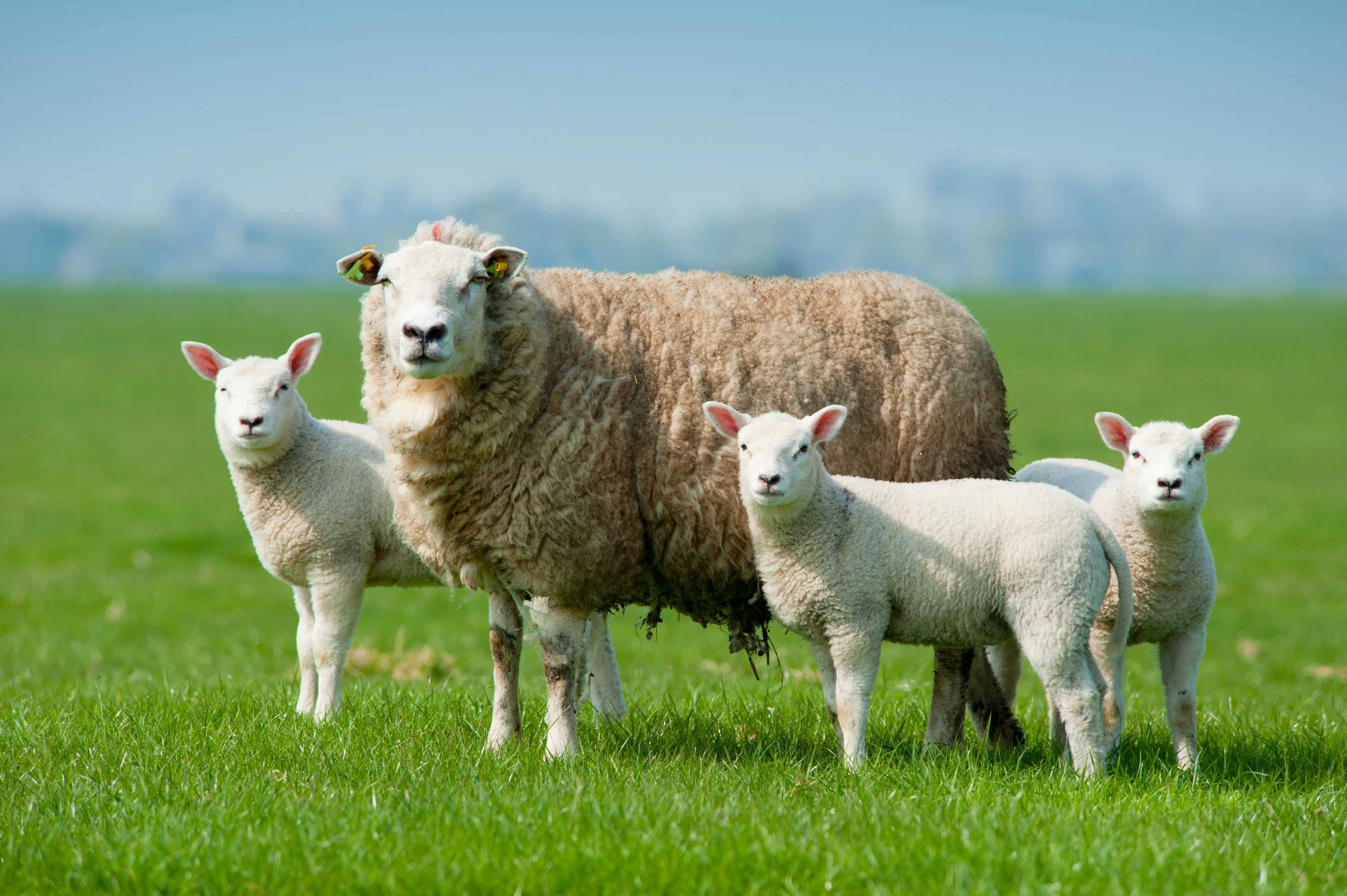Nutrition Management
Pre-Breeding Nutrition
The period from weaning to breeding is critical for ewes. To achieve a high twinning rate, ewes should be maintained at a body condition score (BCS) of 2.5–3.5. They should not become excessively fat but should make daily gains leading up to tupping. If pasture quality is inadequate, consider supplementing with high-quality hay and a small amount of grain.
Late Pregnancy Nutrition
During the last 6–8 weeks of pregnancy, the nutritional needs of ewes increase significantly due to rapid fetal growth. Gradually increase the plane of nutrition during this period, ensuring that ewes receive adequate energy, protein, vitamins, and minerals. If ewes are in fair to good condition, offering 0.5–0.75 lb (225–350 g) of high-quality feed daily is usually sufficient.
- For a ewe pregnant with one lamb, it is recommended to supplement her diet with a high-quality concentrate feed at a daily rate of approximately 0.25 kg.
- If the ewe is pregnant with twins, the recommended daily supplementation increases to about 0.5 kg of high-quality concentrate feed.
In both cases, ensure that the ewes have access to moderate quality hay or silage to feed to appetite, and monitor their body condition scores to ensure they remain within the recommended range.
Ration Formulation
If pasture is unavailable, formulate an appropriate ration based on the condition of the ewes and the quality of forage. Group ewes according to age, condition, and number of fetuses to provide tailored nutrition.
Health Management
Disease Control
Implement a robust disease control program to minimize the risk of infections such as watery mouth, joint ill, and scours. Good environmental hygiene is paramount during lambing time. Ensure that lambing pens are clean, well-ventilated, and free from draughts.
Vaccination
Don’t forget to administer booster vaccinations 4-6 weeks pre-lambing to protect ewes and their lambs from infectious diseases. This proactive approach can significantly reduce disease incidence in the flock.
- Clostridial Vaccines: These vaccines typically protect against diseases such as BlackLeg disease. It is recommended to administer a booster vaccination 4-6 weeks before lambing to ensure that the ewes have adequate immunity to pass on to their lambs through colostrum.
- Pasteurella Vaccine: This vaccine protects against Pasteurella or Mannheimia bronchopneumonia, which can be a significant risk for lambs, especially in stressed or young animals.
- Other Vaccines: Depending on the specific health risks in your flock and region, you may also consider vaccines for; Enzootic abortion (Chlamydia): Protects against abortion caused by Chlamydia psittaci. Vibriosis: Protects against Campylobacter species that can cause abortion.
Consult with your veterinarian to determine the most appropriate vaccination schedule and specific vaccines based on your flock's health history and local disease risks.
Monitoring and Record Keeping
Lambing Surveillance
Utilize knowledge of when ewes typically lamb to optimize staff hours and lambing surveillance. Record data during the lambing period, including lambing ease, mothering ability, and lamb vigor. This information will aid in making future management decisions, such as identifying ewes for culling.
Condition Scoring
Regularly assess the body condition of ewes throughout the tupping and lambing period. Ewes that are too lean or too fat can face reproductive challenges, so maintaining an optimal condition score is essential.
Environmental Management
Housing Facilities
Prepare housing facilities well in advance of lambing. Ensure that lambing sheds are clean, drained, and well-ventilated, with adequate lying space for ewes (approximately 1.3 m² per ewe). Each lambing pen should be a minimum size of 2m x 1m to provide sufficient space for ewes and their lambs.
Shelter for Newborns
Choose lambing or turnout fields based on the best shelter available. In poor weather conditions, provide straw bales or equipment in the fields to protect newborn lambs from the elements.
Managing First-Time Lambing Ewes
Inexperienced ewes may require additional attention. They are more sensitive to disturbances and may abandon their lambs if stressed. Provide them with a quiet, safe environment and allow them ample time and space to give birth without interference.
Emergency Feeding
Ewes in poor condition may need careful management throughout the summer and autumn to ensure they regain condition before tupping. Consult with a nutritionist to plan health and nutrition strategies, including worm and fluke management, mineral and vitamin supplementation, and lactation feeding.
Conclusion
Effective management of ewes from tupping through to lambing is essential for maximizing lamb survival rates and ensuring the overall health of the flock. By focusing on nutrition, health management, environmental conditions, and careful monitoring, farmers can set their ewes up for success during this critical period. Remember, preparation and proactive management are key to a successful lambing season!




